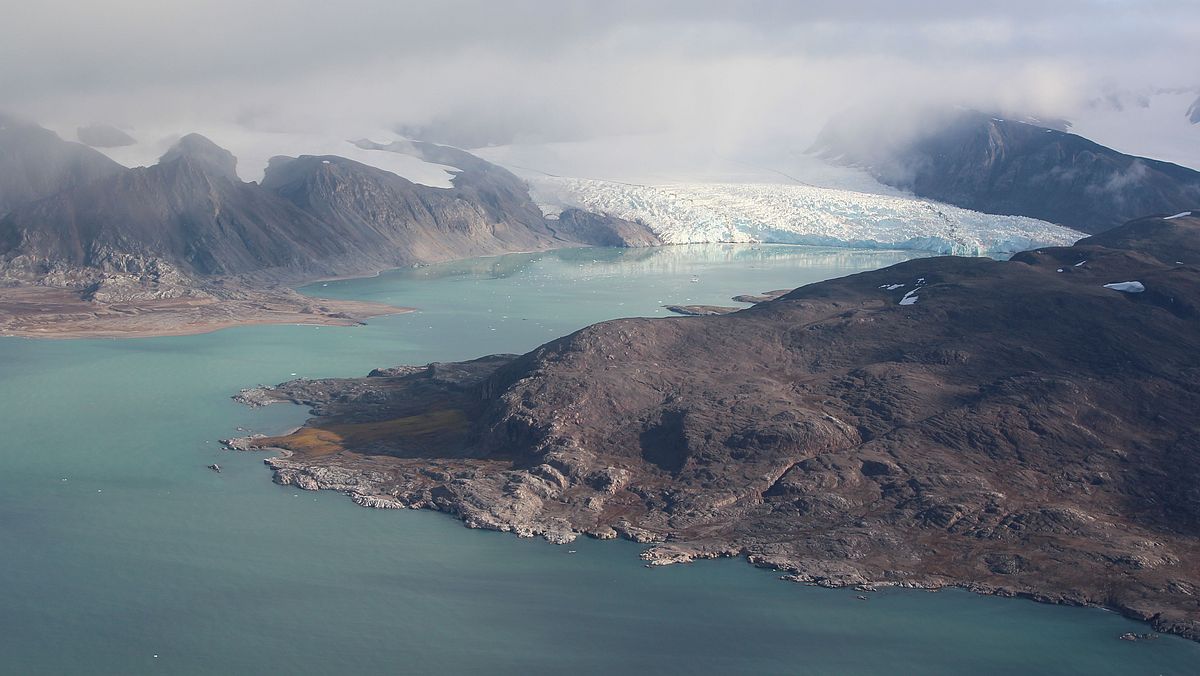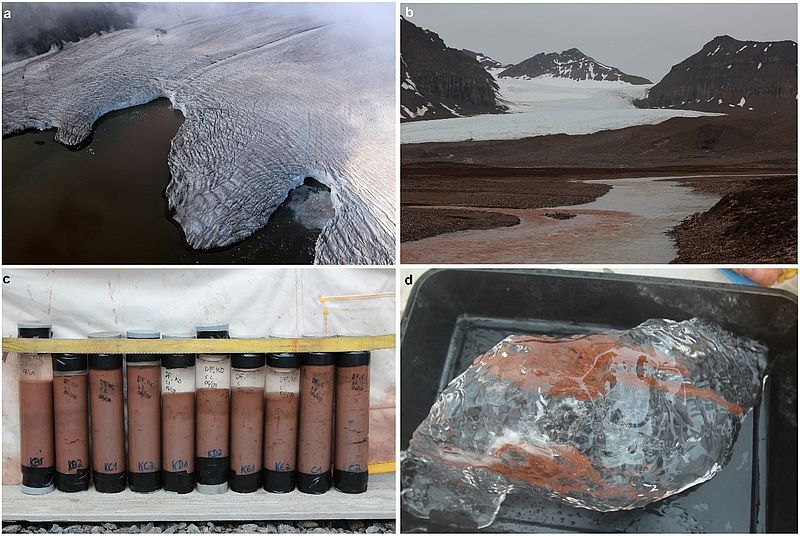Glacial ice and subglacial meltwater is rich in lithogenic material, including iron, due to glacial comminution and subglacial weathering. Therefore, glaciers are an important source of iron to the ocean. Marine-terminating glaciers deliver iron via subglacial meltwater and through icebergs, which slowly melt during their travel through the fjord and ocean once they calved-off the glacier terminus. Much of the iron in glacially sourced material is particulate or will become particulate when in contact with oxic and saline fjord water, due to oxidation and flocculation processes. As a consequence, it is estimated that up to 95% of the glacially derived iron is settling in sediments close to the glacial source. Within these sediments, an interplay of abiotic and microbially mediated reactions, forming the benthic biogeochemical iron cycle, change the characteristics of glacially derived iron and thereby impact its fate, i.e. if it gets buried within the sediments or released to the overlying water.
The Arctic currently has the highest warming rate worldwide, leading to increasing rates of shrinking and retreating of glaciers. When glaciers retreat on land this changes the characteristics of glacially derived material, as meltwater flows through a proglacial river before entering the fjord. Glacial retreat onto land moreover changes overall fjord hydrology and biogeochemistry. Microorganisms are the key drivers of biogeochemical cycles, including the iron cycle, within these sediments. However, it is not well understood how their activity is controlled within these sediments and how this could be impacted by retreating glaciers. Understanding these controls and impacts is essential to make predictions about consequences of future changes.





